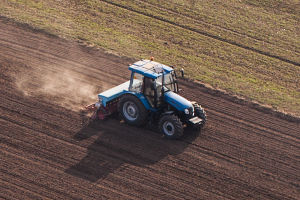Modern agriculture is a broad field encompassing numerous advanced technologies and methods. Its goal is to enhance agricultural productivity, reduce environmental impact, and meet the growing global demand for food through science and innovation.
This article will delve into the core technologies, challenges, and future development trends of modern agriculture.
1. Core Technologies
1.1 Precision Agriculture
Precision agriculture is a core component of modern farming, primarily utilizing high-tech equipment to improve crop productivity and resource efficiency. These technologies include:
-Global Positioning Systems (GPS): GPS technology allows farmers to precisely locate different areas of their fields and adjust fertilization and irrigation strategies according to the specific needs of each area.
-Remote Sensing Technology: Using satellites or drones to gather data on crop growth and soil health helps farmers detect issues early and take corrective actions.
-Data Analytics: Leveraging big data and artificial intelligence to analyze various agricultural data optimizes decision-making and resource allocation.
1.2 Vertical Farming
Vertical farming is a method of growing crops in vertically stacked layers, making effective use of space in urban environments. This method not only saves land resources but also reduces transportation costs and increases yield. Common vertical farming facilities include vertical farms and greenhouses.
1.3 Smart Agricultural Machinery
The application of smart machinery in modern agriculture has significantly increased production efficiency. For example:
-Automated Tractors and Seeders: These devices are equipped with sensors and computer systems to automate tasks such as plowing, seeding, and fertilizing, reducing manual labor while enhancing operational precision.
-Drones: Drones can perform tasks such as seeding, fertilizing, and spraying pesticides, as well as monitor crop growth in real time and collect data.
2. Challenges
Despite the rapid advancements in modern agricultural technology, several challenges persist:
2.1 Environmental Issues
Intensive modern agricultural practices have had negative environmental impacts. Excessive use of fertilizers and pesticides not only leads to soil degradation but also pollutes water sources and air quality. Additionally, large-scale agricultural activities can reduce biodiversity and disrupt ecosystems.
2.2 Resource Shortages
With global population growth and urbanization, the scarcity of water and land resources has become increasingly severe. Modern agriculture must find new methods to conserve water, improve land use efficiency, and address the challenges posed by resource shortages.
2.3 Climate Change
Climate change has profound effects on agricultural production. Extreme weather events such as droughts, floods, and heatwaves negatively impact crop growth. Modern agriculture must develop adaptive production models and technologies to ensure food security amidst changing climatic conditions.
3. Future Development Trends
3.1 Sustainable Agriculture
Sustainable agriculture aims to balance agricultural production with environmental protection. Future agricultural development will focus more on ecological balance, resource recycling, and reducing environmental footprints. Methods such as using organic fertilizers, reducing pesticide use, and promoting crop rotation and intercropping will become mainstream trends in agriculture.
3.2 Agricultural Biotechnology
Agricultural biotechnology, including gene editing and synthetic biology, will play a crucial role in future agriculture.
These technologies can enhance crops' resistance to pests and diseases, improve nutritional content, and increase adaptability. For instance, CRISPR technology can be used to edit crop genes to boost resistance to drought and pests.
3.3 Integration of AI in Agriculture
Artificial Intelligence (AI) will continue to play an increasingly important role in agriculture.
Through machine learning and image recognition, AI can assist farmers in analyzing crop health, predicting yields, and optimizing management strategies. Additionally, AI-driven robots will take on more tasks in agricultural production, such as automatic harvesting and intelligent irrigation.
3.4 Ecological Agriculture and Localized Production
To reduce food transportation distances and lower carbon footprints, localized production, and ecological agriculture will become more important.
Community Supported Agriculture (CSA) and urban agriculture will receive more attention, contributing not only to food safety but also to local economic development and community building.
Conclusion
Modern agriculture is a fusion of technology and nature, continuously innovating and optimizing to contribute significantly to global food security and environmental protection.
Despite the many challenges, advancements in science and technology, along with persistent efforts, will ensure that modern agriculture evolves into a more sustainable and efficient system, providing us with safer and more abundant food resources.


